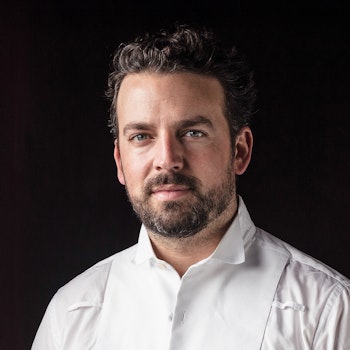At A Glance
WAGNER
Good Friday Spell from Parsifal 1882 | 26 mins
Like most of Wagner’s works, Parsifal had a long gestation period: He first read the thirteenth-century bard Wolfram von Eschenbach’s Parzival in 1845 but didn’t get around to composing the opera, his last, until 1877 to 1882. Parsifal was a popular character in medieval literature, appearing in Malory’s The Whole Book of King Arthur and His Noble Knights of the Round Table, known today as Le Morte d’Arthur. PICTURE THIS: In the “Good Friday Spell” from Act III, Scene One, Parsifal “gazes in gentle rapture on wood and meadow, which are now glowing in the morning light.” Read More
BEETHOVEN
Piano Concerto No. 4 1806 | 34 mins
Beethoven knew that concertos are a form of theater, and the older he grew, the more imaginative he became. In his Fourth Piano Concerto, Beethoven offered his most radical move to date—to begin with the piano alone. The piano enters softly and densely voiced, but the greater wonder is the orchestra's hushed, sensitive, and remote response. The second movement is the concerto’s most famous and has been compared to Orpheus taming the wild beasts with his music. A lyrical and witty finale closes out this most subtle, suggestive, and multi‑faceted of Beethoven’s concertos. Read More
Mozart
Symphony No. 31, K.297(300a), Paris 1778 | 15 mins
Mozart’s 1778 stay in Paris was colored equally with triumph and tragedy. The tragedy was the sudden death of his mother, who had accompanied the twenty-two-year-old composer on this job-seeking trip. The triumph was the premiere of his Symphony No. 31 by Paris’s leading orchestra, the Concert Spirituel. In the France of Louis XVI, Parisians stressed style over substance not a single symphony from that time and place has persisted to achieve repertory—status apart from works by foreigners, like this delightful Mozart work. Read More
BARBER
Symphony No. 1 1936 | 20 mins
When Samuel Barber won the Prix de Rome in the spring of 1935, he was cited as “the most talented and deserving student of music in America.” Several months after his arrival in Rome that October, Barber returned to a symphony he had recently begun. Conductor Bernardino Molinari (who led the premiere in Rome) called the work "modern but serious" and Barber himself later suggested that “at the time it was thought too dark-toned, too Nordic and Sibelian,” at least by the standards of Italian music lovers. The comparisons to Sibelius seem quite on the mark, given the Symphony’s generally ominous mien and compressed treatment of the classical four-movement plan. Read More
Steven Ziegler is Managing Editor at the San Francisco Symphony.

-Mat-Hennek.jpg?w=350&h=350&fit=facearea&facepad=4&auto=format)
